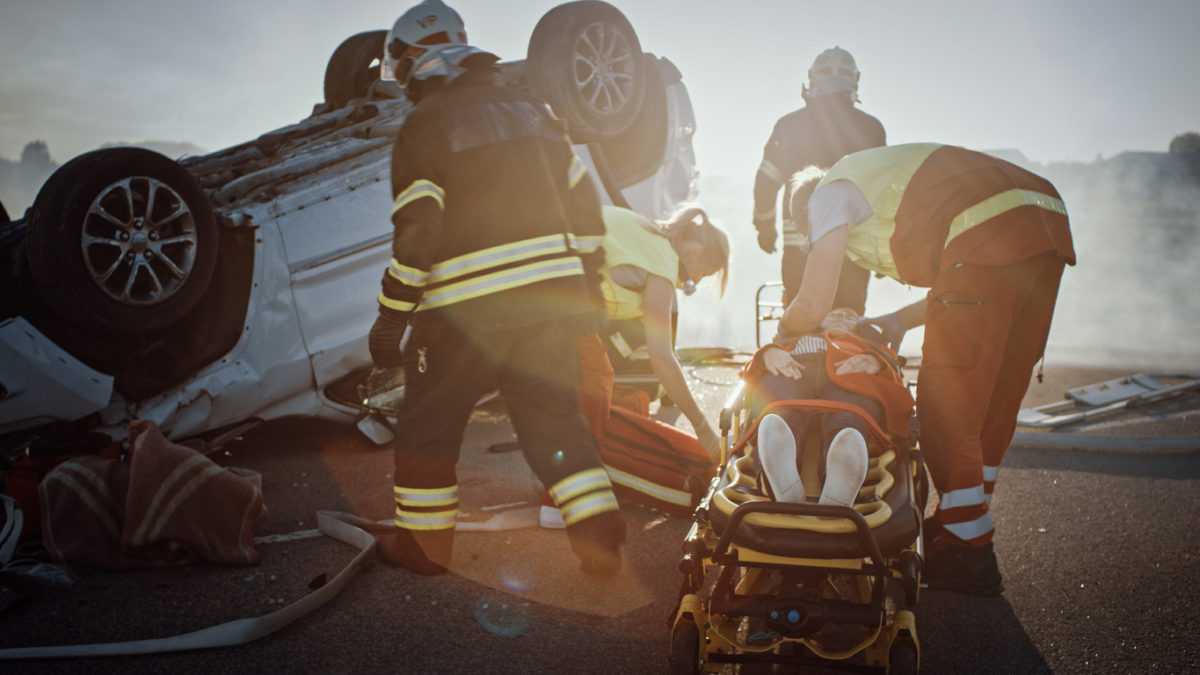
A “serious” car accident includes long-term consequences for anyone involved. This can be measured by the severity of injuries or the extent of damages to personal property, such as to vehicles. It can also be measured by the amount of time and effort spent on recovery.
By this measure, any accident has the capacity to be a “serious” car accident in Chicago so long as it negatively affects someone’s life. Accidents that result in significant injuries, extensive personal property damages, or extended litigation are the most likely to have this effect.
If you or someone close to you has been in an accident that is impacting their life medically, financially, or in any other sense, help is available. An experienced car accident lawyer in Chicago can help assess all of your damages and form a legal strategy to recover those damages through a personal injury claim.
Declaring an accident to be “serious” is a subjective matter dependent on the circumstantial impact on the victim. However, the following objective measures can be applied to influence that determination.
Injury Severity (KABCO Reporting System)
When police officers respond to the scene of an accident, their main job at that point is to write a report. This report must contain all pertinent details and describe them as succinctly as possible. The police record factors weather, time of day, the position of the sun, road conditions, and the make/model of vehicles involved.
One of the most important factors captured in a police crash report is the severity of the most-serious injury that has resulted from the accident. This is one of the criteria they use to factor what is considered a serious car accident. To report this severity, police rely upon broad categories. Each category is ascribed a short-hand capital letter at a glance.
In many states, including Illinois, these injury severity categories are:
-
K (Fatal): “A fatal crash is a traffic crash involving a motor vehicle in which at least one person dies within 30 days of the crash.”
-
A (Incapacitating injury): “Any injury, other than a fatal injury, which prevents the injured person from walking, driving, or normally continuing the activities he/she was capable of performing before the injury occurred. This includes severe lacerations, broken/distorted limbs, skull injuries, chest injuries, abdominal injuries.”
-
B (Non-incapacitating injury): “Any injury, other than a fatal or incapacitating injury, which is evident to observers at the scene of the crash. This includes lumps on the head, abrasions, bruises, minor lacerations.”
-
C (Non-visible or possible injuries): “Any injury reported or claimed which is not listed above. This includes momentary unconsciousness, claims of injuries not evident, limping, complaints of pain, nausea, hysteria.”
-
O (Property Damage only): “No indication of injury.”
Police are instructed to apply A, B, or C classifications if there is the possibility that an injury could fit these categories, which somewhat skews reporting toward assuming the most-serious possible outcome. However, there is evidence to suggest that officers and victims frequently underreport or downplay injuries at an accident scene.
This trend is especially common with accidents involving pedestrians or bicyclists. Police may assume that an injury is not severe until a hospitalization report proves otherwise. Furthermore, accident victims are in shock and full of adrenaline, making them want to move on with the situation rather than dwell on possible injuries.
Since injury treatment can be more expensive than any other accident damages, relying upon this categorization system is a good way to determine a crash’s severity.
Severity of Vehicle Damage
Accidents that cause severe vehicle damage can be disruptive to one’s life. If the vehicle is undrivable, the owner will have to wait until the insurance process commences for estimates to be made, settlements to be offered, or repairs to be completed. Even if the vehicle is technically drivable, the owner may wish to park the vehicle until repairs can be made, and there is still the time the vehicle spends in the shop during the repair to consider.
If the case is considered a serious car accident, there is also the possibility that the vehicle will be declared a “total loss” by the insurance company. This occurs when the insurer deems that the cost of full repairs exceeds a set percentage of the vehicle’s current cash value. The percentage differs from insurer to insurer, except in states like Florida that declare a maximum limit, such as 80 percent.
Having a vehicle “totaled” by the insurance company doesn’t necessarily signal expensive repairs. Insured vehicles that are more than a few years old may have an actual cash value much lower than the resale market value. Therefore, damages that cost just a few thousand dollars to repair can be sufficient for insurers to declare the vehicle is totaled.
While even the most extensive vehicle repairs pale in comparison to healthcare costs in the United States, a hefty repair bill is still enough to disrupt someone’s life. Further, insurance companies are more likely to debate the costs of repairs or whether repairs are covered once vehicle damages reach into the thousands of dollars, which they easily can.
Accident victims should know that they are not likely to receive the maximum amount of possible coverage from insurers unless they fight to document their costs and enforce the language of the applicable policy. That’s why having a Chicago car accident lawyer assist with your case can be invaluable.
Impact on Accident Victims’ Lives
A car accident can be “serious” without causing major health complications or extensive vehicle repairs. All that has to happen is for the effects of the accident to have a negative influence on the victim’s life.
For example, someone who cannot afford repairs may desperately need a reasonable settlement from the insurer representing the at-fault driver. Otherwise, they have no way to get to work or perform essential errands.
Another example would be an accident which causes C-classified injuries, according to the police report, but that results in whiplash that causes pain and makes it difficult for the victim to return to work.
A third possibility is an accident where a victim thought they were not at-fault but is suddenly being accused of fault by the other driver’s insurer. Or, the victim is counter-sued while pursuing a liability claim.
Any accident that causes a victim to suffer or worry is “serious” from their own perspective. That victim needs a personal injury lawyer to provide legal guidance and a strategy.
If an Accident Feels Serious to You, It’s Serious to Our Chicago Car Accident Attorneys
Never let anyone convince you that an accident is “not serious” and that it doesn’t deserve attention. If you feel hurt, are worried about the costs of repairs or medical treatment, or are facing hostile legal maneuvers, you deserve legal representation that will take your case seriously.
In any event, the experienced car accident lawyers at Langdon & Emison are prepared to represent your claim and, if need be, pursue a lawsuit to seek the resolution you deserve. Give us a call at (866) 931-2115 or contact us online at any time, and we can schedule you for a free, no-obligation case review.

